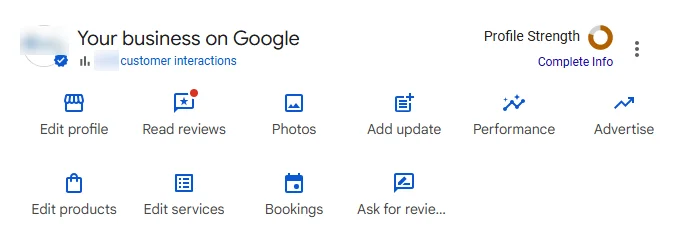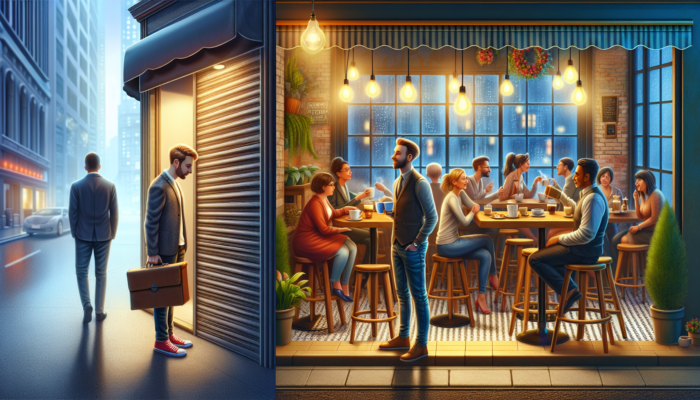Social media moves dizzyingly fast, but some fundamental concepts stay the same—like the importance of organic engagement and connecting with your audience. In this article, I've rounded up 10 ideas to boost organic engagement, with examples from brands that are successfully adding followers and building communities online. That way, you can use these tips to start improving your own engagement right away.
Here are 10 hacks for improving your social media engagement in 2020:
- Private Facebook groups
- Games and giveaways
- Video challenges
- Gif conversations on Twitter
- User-generated content
- Virtual events
- Collaborations and takeovers
- Augmented reality lenses
- Mixed media
- More in-app actions
But first, let’s make sure we’re clear on why organic engagement is an important metric.
Why organic engagement matters on social media
From time to time, someone will announce that organic social media is over. It's all about the ads. And it is certainly true that the accuracy of targeted ads on social networks like Facebook, Instagram, and TikTok has increased.
But at the same time, ad costs are rising, and, especially right now, more people are relying on digital media to stay in touch with friends and make meaningful connections.
TikTok was downloaded 87 million times just last month.
All of which means that genuine, organic engagement still matters. In fact, it matters more than ever. If you want your brand to succeed on social media, you need to build an active and authentic community which adds value for your followers.
10 social media engagement hacks in 2020
These engagement hacks are based on strategies and tools that I've used myself and found worked really well for different types of companies in many different countries. Take a look and see what inspires you!
1. Private Facebook groups
Facebook has been encouraging the use of groups for a while. While your main Facebook page is great for broadcasting information, groups allow you to create a focused, tight-knit community where people can share, discuss, and collaborate around your brand.
Anyone can request to join a Facebook group, but you can set up filter questions to make sure that your group is populated with your target audience.
I really encourage people to work with Facebook groups, because they're a workable way to build engagement for almost any business. There are broadly three categories of Facebook group run by brands:
- Support groups: People share ideas, knowledge and advice.
- <span lang="EN" xml:lang="EN">Social groups</span>: People share projects, make friends and organize events.
- Insider groups: People get exclusive access to branded content, releases and events.
For example, this fashion brand runs a book club as a private Facebook social group.
Meanwhile, this SaaS brand runs a support group for its users. People compare notes about the application, share their work, and even suggest new features that they'd like to see. The group also uses Facebook's “Mentorship” feature, which connects experienced users with those who need a hand. Brand admins are very active in the group, so members feel that their engagement is valued.
Lastly, here's an example of an insider Facebook group, run by a brand. If you've ever taken a content marketing course from HubSpot, you probably got an invitation to join this group.
HubSpot uses it to run invite-only webinars and make product announcements. At the same time, they reap all the engagement benefits of running a social or support group.
2. Games and giveaways
It's strange to think how fast social media has evolved. In the beginning, we just shared written status updates. Then photographs took over. Then we discovered that video content got more engagement then photos.
So what's next? Interactive video, playable ads, and mini-games. Big brands (with budgets to match) are increasingly ambitious with the content they share: platform games, interactive video storylines and so on. Interactive content increases the time that followers spend on your social media profile, it has strong viral potential, and it can function as a painless method of lead generation.
The most recent example I've seen (via Mobile Marketer) is this game from Burberry, a mix of dressing up and classic platform game. It's surprisingly addictive.
The game is available on Burberry's own site, other shopping sites, the app WeChat and as an in-store activity. (If you want to know why that's significant, jump ahead to hack #10!) And when you finish playing, you get access to exclusive Burberry-branded gifs, so that you keep sharing online.
Obviously, this level of game design is beyond most content marketers' budgets. However, you can reproduce the ideas on a smaller and more feasible scale. Ready-made apps, game platforms for marketers and simple puzzles are rapidly becoming more popular.
Ideally, any branded game will tap into a dynamic that's already popular. For example, hidden objects games have been around for decades. If you use an off-the-shelf app, you just have to supply your own graphics and the game is ready to play.
Spin the wheel games are also popular, just like the classic TV show “Wheel of Fortune.” People love to play it, it's completely fool-proof, and you can run a major promotion without blowing the whole budget on rewards.
I suspect that interactive content has partly become more popular this year due to lockdown. We're all desperate for distractions, either for ourselves or for our reluctantly home-schooled children. Paradoxically, that's great news for brands—because it means that consumers will reward you for creativity and entertainment value.
<span lang="EN" xml:lang="EN">3. Video challenges</span>
You might not have taken part in a video challenge yet, but you've definitely heard of them.
The ice bucket challenge. The cinnamon challenge. The Renegade dance challenge.
Most video challenges share some key characteristics. They're quick and easy to do at home. They often have a signature soundtrack or phrase. And because they're filmed as short video clips, popular challenges tend to spill over from their original social platform and onto other social media. (This is great news in terms of viral reach.)
To create your own challenge, you just need a fun idea and an active audience. Don't create a challenge that’s too difficult, time-consuming, or derivative; if you borrow someone else's idea, you risk a backlash.
Here are a couple of examples to get you started. Remember the first few weeks of the 2020 lockdown, when everyone was suddenly making that coffee?
The Dalgona coffee challenge was inspired by a Korean TV show, took off on YouTube, and then spread to TikTok. And it was a gift to instant coffee manufacturers.
Like many challenges, Dalgona coffee emerged pretty much spontaneously. But some consumer brands have successfully engineered viral challenges, such as the NYX cosmetics challenge that publicized their new Butter Gloss Pop product.
Image source
Last time I checked, the hashtag had already reached 10.8 billion views. These challenges are designed to increase reach and brand awareness. They aren't ideal for lead generation or reaching a very focused audience, but they can help to bring your brand to a larger public.
4. Gif conversations on Twitter
Let's be blunt: I know of at least a few marketers who have given up on Twitter. But I think they're missing out. Twitter is still a key channel for customer service, customer feedback, and online discussion. It's also a great way to reach specific demographics, including B2B audiences.
If you want a quick engagement fix, then starting a gif thread can get you some attention on Twitter. This is where you pose a question, or give people a prompt, and ask them to respond with a single gif.
For some reason, this is especially popular with sports communities.
So why does this work? Well, like most things on social media, it's easy for people to join in. A frictionless experience is vital when you want people to engage with you.
Secondly, it mixes text with visual media and pop culture references. It taps into the media and style of communication that people are already using on Twitter, and gets plenty of attention in the process. You'll benefit from showing that you appreciate and understand online culture, especially if your brand skews to younger demographics.
5. Sharing user-generated content on brand hashtags
This trend has been around for a while, but it shows no signs of slowing down in 2020. The idea is simple, and similar to a video challenge: You create a hashtag that refers to your brand, and encourage people to share. But instead of asking people to complete a challenge or show a specific product, you invite them to share their unique experience of your brand.
Fashion and cosmetics brands are often at the forefront of consumer-focused social media, so it's no surprise that they're skilled at this. For example, the cult footwear brand Rothys uses the hashtag #rothysinthewild to collect photos and videos posted by their customers. All of that user-generated content is essentially free advertising, bringing Rothys to new audiences and building a mountain of social proof.
The key to getting user-generated posts like this is to reward people who post. Whenever content pops up on your hashtag, reshare it to your own feed or add it to a dedicated Instagram highlight. Show people that you've noticed their contributions!
Once your hashtag is established and there's a regular stream of posts coming in, this is also a way to build community online. People who share posts with your brand will find each other through the hashtag. This solves a key problem for some social networks: While you can't create groups on Twitter or Instagram, you can develop a strong sense of community through hashtags.
6. Virtual events, chats, and networking
We've already touched on the idea of social media groups, or hashtag communities, around your brand. The natural next step is community events in real time: webinars, live chats, interactive livestreams, and networking.
The good news is that social media networks are rapidly introducing new features to support this. You can now broadcast live video on every single social platform, and most offer the option for viewers to share comments and reactions in real time.
Early in 2020, Facebook released Messenger Rooms for live video chats. This takes live broadcasts to the next level: you can invite a select group of people to fully participate in the conversation. When you create a room, you can choose to invite specific people or open the room to anyone. You can also schedule a room to “unlock” at a specific time or date, which is really useful for busy social media managers.
It's already available across Facebook Messenger and Instagram, with WhatsApp expected to follow soon.
Facebook is still playing around with the details of Rooms, but this is an app with huge potential. You can create private rooms within Facebook groups. Rooms also works on Instagram—just tap the video camera icon in the top-right of your private messages.
Most brand events in 2020 have, of necessity, been virtual. But even when life goes back to normal, don't lose touch with these virtual channels. Virtual events—or at least livestreaming in-person events—will help you reach people who can't attend due to distance, other commitments, or accessibility issues.
(And speaking of accessibility, follow these tips to make your video more accessible for people with hearing impairments. If you plan to use video regularly, invest in good software for automatic captions.)
7. Collaborations and takeovers
When you hear the word “collaboration,” a lot of marketers' minds jump to expensive influencer campaigns. And those have their value—but, as always on social media, there are simpler and more affordable alternatives.
As we've seen, ordinary customers can bring huge benefits to your brand when they share content about your brand. So why not give them the chance to run your account for a day?
You can collaborate with customers, other local businesses, and complementary companies (for example, a brewery teaming up with a snack company). One great example of this is the Paperchase ambassador scheme. Every year, the stationery company selects a few university students to represent the brand. They get to run the brand's social media accounts for a day and try out new products.
You could team up with an influencer, customer or partner brand to run Twitter chats, Facebook Live, split-screen Instagram Lives or TikTok takeovers.
If you partner with someone who already has a sizeable audience, collaborations can increase your reach very rapidly. But they're also powerful because they create a sense of excitement for your regular followers. You can transform a weekly Q&A session into a sold-out event just by adding a new name and face into the mix.
8. Augmented reality lenses
Don't be fooled by the science fiction name: augmented reality is already an everyday part of our lives. If you've ever used an Instagram Story effect, you've used augmented reality.
With that said, augmented reality lenses are rapidly becoming more sophisticated—and both social networks and brands are waking up to the possibilities. Single Grain has pinpointed augmented reality as a major trend for Facebook Ads in 2020, while SnapChat is busy adding new features for brands and creators to design new AR lenses.
Many young creators, artists, and influencers are already playing around with these lens creation tools. They're easier to use than you think! If you're not sure where to start, speak to a graphic designer or try contacting a creator whose work you enjoy.
For example, you can search for AR effects by theme in your Instagram Story editor. Just tap the icon of a magnifying glass with stars on it. Each effect is credited to a creator who you can then track down and contact.
So what's the engagement value of these lenses?
Well, like every other hack mentioned here, they're something that social media users already enjoy interacting with. When you join in the fun, you have the chance to increase your audience and connect with followers by showing you care about the same things. Try creating AR filters that link to your followers' interests, let them play with your products, or even represent your values.
9. Mixed media
One of the things I love about social media is that people always find a way to make it work for them. Long before Twitter had a built-in camera, people were sharing video from other sites. And when Instagram users wished they could use their words more, people started sharing screencaps of Tweets and notes.
The only problem with this DIY version of social media is that it doesn't always look beautiful. You can save a lot of time on content creation by re-sharing content across different platforms—but you have to make sure your design is up to scratch.
My favorite app for this is Remix by Buffer. The design tools are very effective, and it's extremely fast to use. Start by putting in the URL of any website, tweet or even a Shopify product listing. The app then allows you to add backgrounds, change the image dimensions and pick a design that will look great.
This is a fun way to share news, customer reviews or testimonials, or even just funny Tweets that caught your eye. If you decide to share content from other users, make sure you include proper credit. If it's your own content … fire away!
10. More in-app actions
Finally, let's take a second to think about the future of social media. What's coming next?
Judging from the features that social networks are putting out, the goal is to do more and more within social media. Facebook, Instagram, and Pinterest have all released new in-app shopping features during 2020. Instagram now offers Story stickers to buy gift cards, make charitable donations and order food. SnapChat has announced their new SnapChat Minis scheme, which gives brands the power to build mini-apps on the platform.
The inspiration for many of these ideas is the Chinese social media giant, WeChat. You can pretty much live your entire life inside WeChat, including messaging, social sharing, shopping, ordering food, paying bills, and booking appointments.
It remains to be seen whether this approach will work for Western audiences. While in-app features offer plenty of convenience, they also involve handing over a lot more data to the social media giants. So finding the right balance—and keeping your data policies transparent, accurate and up to date—will be key.
Start improving your social media engagement today
The key to success on social media is to keep on posting, engaging, and trying out new ideas. By this time next year, we'll probably have 10 new social media engagement hacks to share! But in the meantime, I'd love to hear if you've tried out any of these engagement hacks and what results you saw
About the author
Corinna Keefe is a freelance writer who specializes in digital marketing, tech and social media.






















Recent Comments